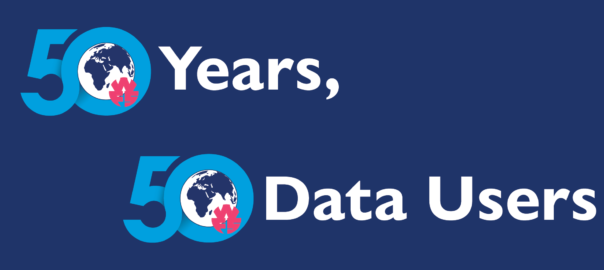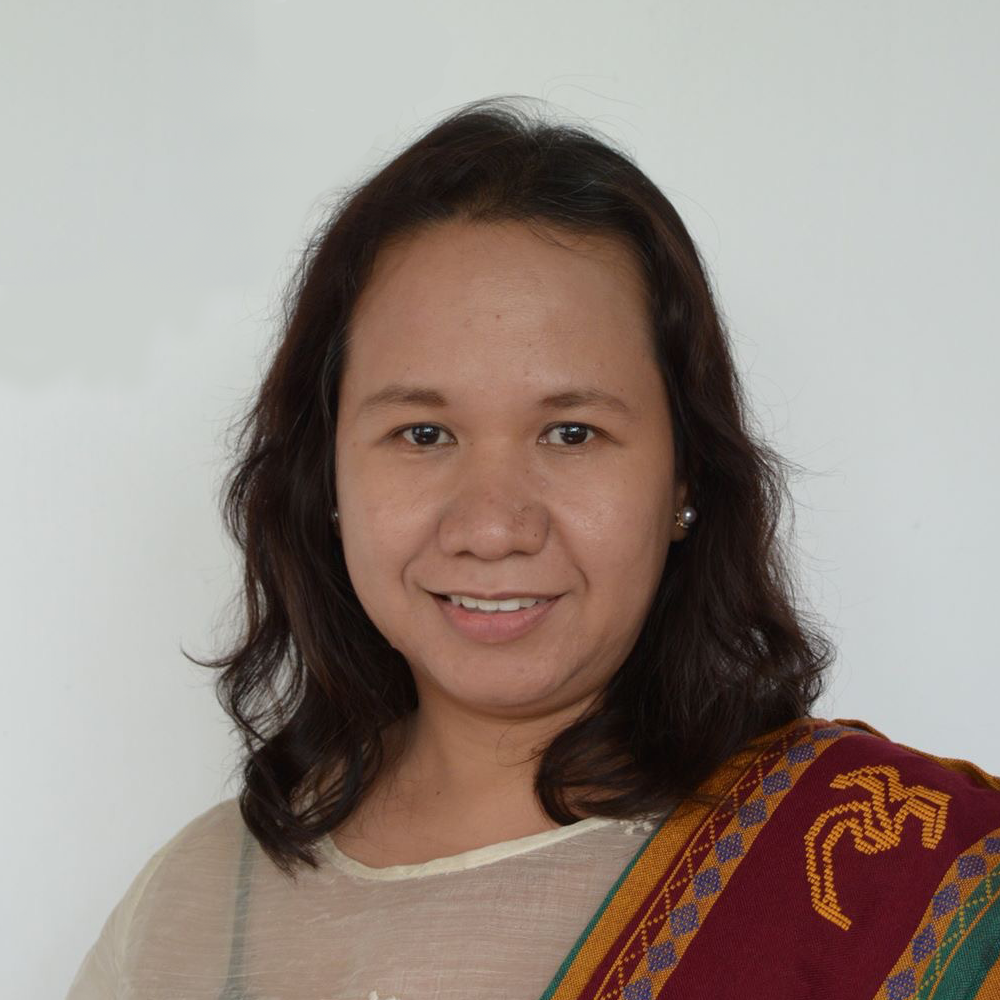50 Years, 50 Data Users: Celebrating 50 Years of Data Changing Lives

2022 marks the 50th anniversary of the World Fertility Survey (WFS). The Demographic and Health Surveys (DHS) Program was created in 1984 as a follow-on project to the WFS. To celebrate 50 years of USAID’s dedication to high-quality data collection, evidence-based decision making, and host-country ownership, we are shining a spotlight on a selection of 50 program managers, policy makers, journalists, researchers, and others from across the globe who use WFS and DHS data in a series of blog posts throughout the year. Meet the first 10 data users below!
DHS data users come from all over the world. Click on a marker on the map below to learn more about the first 10 featured data users.

Jacob A. Adetunji
United States
Lifelong user of WFS and DHS Program data
Jacob A. Adetunji
Current role: Deputy Director for Data (FP), Global Development Division, Bill & Melinda Gates Foundation
How I have used WFS/DHS data: I started using data from both WFS and DHS programs in graduate school. I analyzed data from the 1981/82 Nigeria Fertility Survey for my master’s degree project at the Australian National University and I analyzed the then newly-released 1986 Ondo State DHS Survey for my doctoral dissertation.
I would be remiss if I failed to mention some “game-changer” tools that came out of the DHS Program over the past decades that I found really helpful at USAID. One was in the area of biomarkers – especially the collection of HIV sero-data. Its impact was far-reaching and global. It led to a shift in our understanding of HIV risk-factors, especially when the anonymized linkage between prevalence and individual background variables began in the 2003 Kenya DHS. The DHS Program STATcompiler, the Mobile App, and Analytical Reports have also proved to be invaluable tools.
A big “Thank you” to USAID for its unflinching commitment to evidence-based policy and program decision-making in developing countries as epitomized by its funding and management support for these survey programs over the past 50 years.

Elma P. Laguna
Philippines
DHS Fellow uses data to drive family planning programs and policy
Elma P. Laguna
Current role: Assistant Professor, Population Institute, College of Social Sciences and Philosophy, University of the Philippines – Diliman
How I have used WFS/DHS data: The National Demographic and Health Survey (NDHS) is an important source of data not only on demographic and health indicators but also on the status of women and children in the country. Analyses on fertility based on NDHS have provided the basis for programs and policies to strengthen contraceptive supply distribution, behavior change campaigns on the use of contraception, and pushing for comprehensive sexuality education to address the rising percentage of early pregnancy.
In the early days of the pandemic, we at the UP Population Institute used NDHS to highlight the inequality in access to water, soap, and even handwashing stations. As a result, some organizations and local government units included hygiene kits as part of the initial aid provided to families most affected by the community lockdowns.
As a teacher, I have always used the DHS datasets in my quantitative methods class, and I am pleased that some of our students have used these datasets for their MA theses.
Elma Laguna was a DHS Fellow in 2017 and returned to cofacilitate the DHS Fellows Program in 2018 and 2022. She has published and co-authored several working papers and journal articles using DHS data, including Ten Years of Traditional Contraceptive Method Use in the Philippines: Continuity and Change.

Peter M. Macharia
Kenya
Spatial Epidemiologist would be “flying blind” without DHS data
Peter M. Macharia
Current role: Postdoctoral Researcher, KEMRI Wellcome Trust Research Programme
How I have used WFS/DHS data: I have used all DHS Program data collected in Kenya since 1989 to estimate child mortality, factors associated with child mortality, and their relationship at a high spatial resolution in Kenya and across Sub-Saharan Africa. I have commonly seen DHS data used to track progress towards the achievement of Sustainable Development Goals and assess the impact of programs including the use of data to reorient interventions and as a basis/justification for funds applications.
I have a keen interest in childhood mortality and malaria prevalence and how they vary across small areas, subgroups and disaggregations. I am interested to see the progress made as childhood mortality is a benchmark of a country’s health status and progress towards achievement of the Sustainable Development Goals. In the absence of the World Fertility Survey and The DHS Program, there would be more childhood mortality and widespread health inequities. Overall, we would be flying blind in the absence of data.
I am interested in the GPS coordinates as I am a Spatial Epidemiologist and I rely on data that has a location attribution. Mainly I use the raw Stata files and link with GPS coordinates for geospatial analysis on population health.
To access geographically-linked health and demographic data, spatially modeled map surfaces, and geospatial covariates, visit The DHS Program’s Spatial Data Repository.

Maida Umar
Pakistan
“‘In God we trust; all others bring data.’ The beauty of The DHS Program is uniformity, periodicity, timeliness, and reliability.”
Maida Umar
Current role: Statistician/Data Analyst, Ministry of Health
How I have used WFS/DHS data: I have used DHS data for bridging the gap between evidence and policy and produced manuscripts using time series DHS data. I have taught about The DHS Program to Master of Public Health Students.
Recently in Pakistan, DHS generated evidence that mortality is not decreasing despite the fact that maternal health indicators are improving. As a result, the Ministry of Health has started working on quality of care and launched a Universal Health Coverage Benefit Package program at the district level. Moreover, we are also working to monitor effective coverage and DHS is the major source of information.
I have remained part of the team who implemented the Pakistan Maternal Mortality Survey and SARA survey (similar to The DHS Program’s SPA surveys), so I had access to the national resources. The DHS Program website is a very convenient way to access data and resources like reports, articles, recode and methodological manuals.
W. Edwards Deming says, “In God we trust; all others bring data.” The beauty of The DHS Program is uniformity, periodicity, timeliness, and reliability. Without DHS data, tracking progress and real time monitoring would be a challenge in global health especially for low- and middle-income countries. The progress we have made so far would not be possible.

Kofi Awusabo-Asare
Ghana
DHS Fellow uses WFS and DHS data to inform reproductive health policy for young people
Kofi Awusabo-Asare
Current role: Professor of Population Studies, University of Cape Coast, Department of Population and Health
How I have used WFS/DHS data: I used data from the 1979-80 Ghana World Fertility Survey for my PhD thesis, Education and Fertility in Ghana (1988) at the University of Liverpool, UK. I have also published articles using the Ghana Demographic and Health Surveys (GDHS) as well as one of the Kenya Demographic and Health Surveys. As a Fellow of the DHS Program, I have encouraged a number of my students to use DHS data for their theses. The datasets have provided invaluable materials for teaching and learning.
My colleagues and I used data from the GDHS to show trends in median ages at first sex, marriage, and birth in Ghana. The results informed the development of the Reproductive Health Policy for Young People in Ghana (2016) under the auspices of the National Population Council. The availability of long running nationally representative data has been a game changer in the study of sexual and reproductive health variables in participating countries. For some countries DHS surveys are the main source of data for analysis.
Kofi Awusabo-Asare was a DHS Fellow in 2013. He has published and co-authored several working papers and journal articles using DHS data, including Household Nucleation, Dependency and Child Health Outcomes in Ghana.

Andrea Sprockett
United States
The EquityTool relies on wealth and asset questions from DHS Program surveys to ensure programs reach those most in need
Andrea Sprockett
Current role: Chief Operating Officer, Metrics for Management
How I have used WFS/DHS data: Metrics for Management, along with a collaborating panel of experts in the field of wealth measurement including USAID, UNICEF, Population Services International (PSI), Marie Stopes International (MSI), Results for Development, and BroadBranch, uses DHS Program data to develop the EquityTool for more than 60 countries. Many programs prioritize serving the poor yet face challenges when trying to determine whether they are reaching their intended population. Program leaders need data and real-time feedback to adjust and improve service delivery. The EquityTool was created to allow the rapid assessment of beneficiary wealth, and offers an opportunity to better assess, improve, and direct development programs to ensure effective delivery of services. The tool applies a simplified, country-specific version of the DHS Program wealth index questions. To date, we have more than 2,100 users, who have collected data from over 2 million people. This easy-to-use tool would not be possible without the DHS survey data.
Metrics for Management greatly values DHS Program indicators related to household and individual assets; household water sources and toilet facilities; and dwelling construction materials. These indicators are instrumental to understanding households’ relative wealth. The EquityTool could not be created without the inclusion of these wealth and asset questions in DHS Program surveys. Our organization appreciates the work that goes into collecting and reporting the data for the DHS Program Wealth Index.

Yagya Bahadur Karki
Nepal
“As WFS/DHS indicators are consistent and robust they are very good for development planning.”
Yagya Bahadur Karki
Current role: Executive Director, Population, Health & Development Group
How I have used WFS/DHS data: I have used 1976 Nepal World Fertility Survey data in my research articles which have been published in a number of journals nationally and internationally. Also I have used Nepal DHS data from 1996 onwards in producing policy papers for the Government of Nepal. They have helped the Government to formulate sexual and reproductive health policies and programs. I have used WFS and DHS national reports as well as data system files. In 1996, I chaired the first NDHS national dissemination session in Kathmandu.
World Fertility Survey and DHS Program data have had tremendous impact on global health and development. For instance, by examining the MMR trend of Nepal and seeing that Nepal had achieved substantial progress in reducing MMR in the 10 years since 1996, the Government of Nepal received a UN award for progress made in achieving the Millennium Development Goals.
As WFS/DHS indicators are consistent and robust they are very good for development planning. In the absence, the global health would be in a mess as indicators derived from using different methods and sources would be confusing.

Chinazo Nwachi Ujuju
Nigeria
Senior MEAL Specialist uses DHS data to understand antimalarial use in public versus private sector
Chinazo Nwachi Ujuju
Current role: Senior Monitoring Evaluation Accountability and Learning Specialist, Malaria Consortium
How I have used WFS/DHS data: I have used DHS Program data in my work for several intervention areas such as HIV/AIDS, reproductive health and family planning and malaria. Most times, project goals and outcomes are set using DHS Program data. DHS Program data have been relevant to setting targets and measuring progress in program implementation. I have analyzed DHS data to understand antimalarial utilization in the public versus private sector. I also used DHS data for my master’s dissertation on determinants of IPTp utilization in Nigeria. Very recently, following reporting of an increase in malaria prevalence among school children, I conducted a secondary data analysis on ITN use in children under 5 and school aged children. I like exploring DHS data to respond to research questions and meet program needs.
I have various ways I access and use DHS data. it depends on the need at a particular time. I have the hard copy of the Nigeria DHS Final Report on my desk and the PDF downloaded on my laptop so I can easily access the data required. STATcompiler is another favorite way of accessing DHS data. The graphics make it easy to use data for advocacy during meetings with relevant stakeholders. This is very handy as I can access it with my phone.

Kyaw Swa Mya
Myanmar
DHS Fellow uses data to teach students and to guide COVID-19 response
Kyaw Swa Mya
Current role: Professor, University of Medicine Taunggyi
How I have used WFS/DHS data: As an academician, I help my Master of Public Health students use DHS Program data for their theses. We can access the many published papers so that we can learn success stories from other countries. These resources are useful for my master students and the teaching/learning process.
In Myanmar, policy makers were now aware to use the Myanmar DHS data findings in their policy formulation and implementation process. DHS Program data have had an impact on global health. For the COVID-19 pandemic, DHS data provided the information about hand washing practice. Moreover, many reproductive and child health indicators directed the way we should move forward as a global community.
I have also published many papers using DHS Program data. My favorite DHS Program indicators are Infant and Young Child Feeding (IYCF) indicators. In Myanmar, we have conducted many surveys regarding IYCF. However, there was no survey as valid and good as DHS data.
Kyaw Swa Mya was a DHS Fellow in 2018 and returned to cofacilitate the DHS Fellows Program in 2019. He has published and co-authored several working papers and journal articles using DHS data, including Feeding Practices and Nutritional Status of Children Age 6-23 Months in Myanmar: Further Analysis of the 2015-16 Demographic and Health Survey.

Bongben Leocadia Jisi Cameroon
Health Journalist has seen maternal mortality data influence government policy
Bongben Leocadia Jisi
Current role: Freelance Health Reporter
How I have used WFS/DHS data: DHS surveys are a key source of information for journalists. I have used data from DHS surveys in writing articles on maternal mortality rate in Cameroon. How maternal mortality rate has increased or decreased. DHS is just the right place to get such data and detail explanation on trends in the domain of healthcare.
Following the 2011 Cameroon DHS government realized that there was a hike in the maternal mortality ratio (MMR): 782 deaths per 100,000 live births, which was high. The Cameroon government through policy change put in place a multi sector program to reduce maternal mortality. (Note: The pregnancy related mortality ratio* declined between 2011 and 2018 according to the 2018 Cameroon DHS.) DHS Program data help governments to improve on policies for the benefit of the population using data generated by surveys.
Without DHS Program data the healthcare sector would be groping in the dark not knowing how to tackle certain issues, where to focus, and why to focus on a particular aspect.
DHS in the News features examples of reporting on DHS survey results or that use DHS Program data as background information for stories, such as Bongben Leocadia Jisi’s piece on maternal mortality in Cameroon.
*Prior to 2016, The DHS Program’s definition of maternal mortality included any death to a woman while pregnant, during childbirth, or within 2 months of delivery or end of pregnancy, regardless of the cause of death. This definition is now used to calculate the Pregnancy Related Mortality Ratio (PRMR). In late 2015, The DHS Program made changes to the questionnaire to align with the WHO’s definition of maternal mortality, which includes deaths of women while pregnant, during childbirth, within 42 days of delivery or end of pregnancy that are due to the pregnancy, excluding deaths due to accidents or violence. Watch the video series on YouTube or read this blog post to learn more about MMR and PRMR.
Nominate Yourself or Another Data User to be Featured
Have you used WFS or DHS Program data to develop or implement policies, programs, and projects in low- and middle-income countries? Have you used WFS or DHS Program data in your research? Do you know someone who champions WFS or DHS Program data use in their work? Nominate yourself or someone else by filling out a brief form and you may be chosen to be featured as one of 50 data users.


I am regular user of DHS Data to carry out further analysis or to serve as data (secondary) for my postgraduate studies in Demography.
I live in Ghana but will be glad to be part of this on-line course
Thank you for nominating yourself as a DHS data user! You can also take free open online courses on the Learning Hub: https://learning.dhsprogram.com/